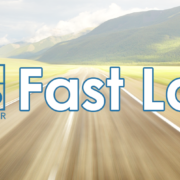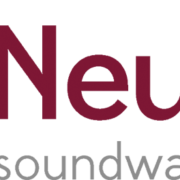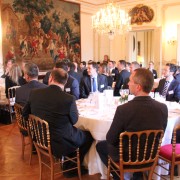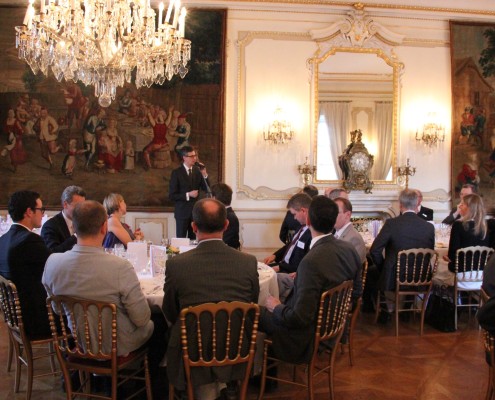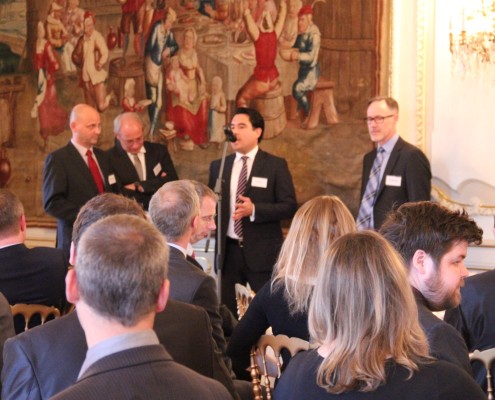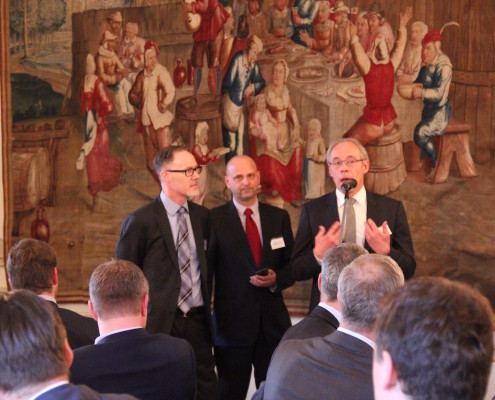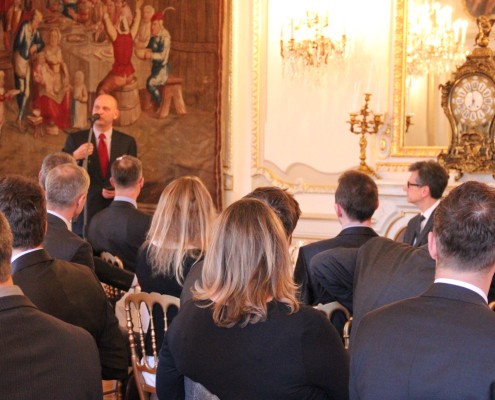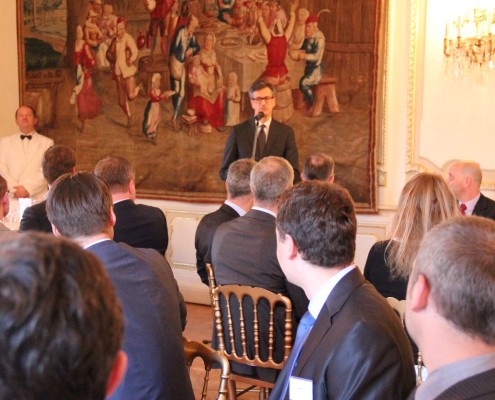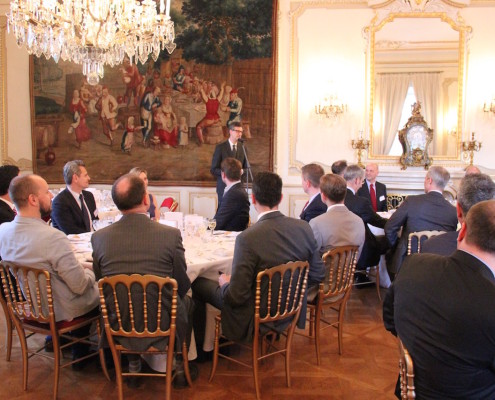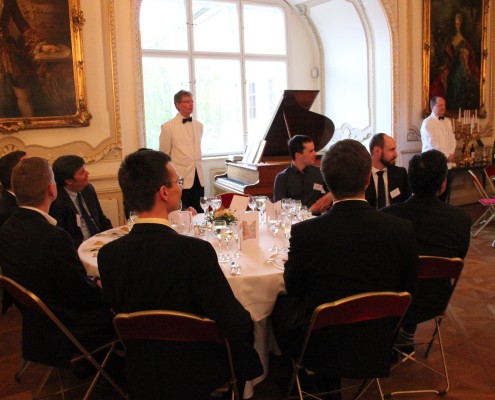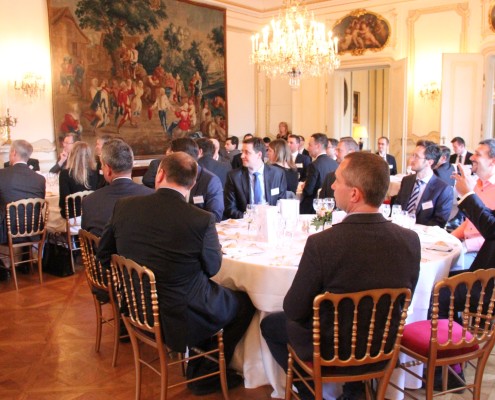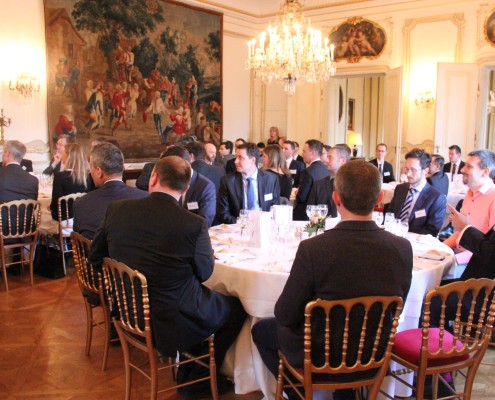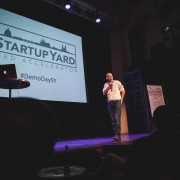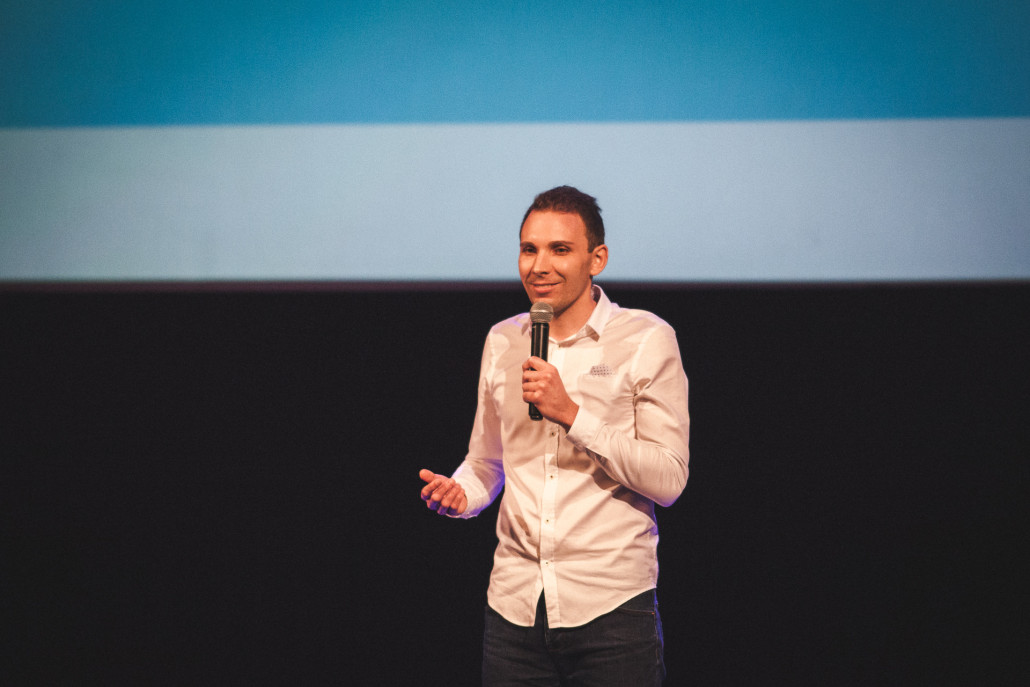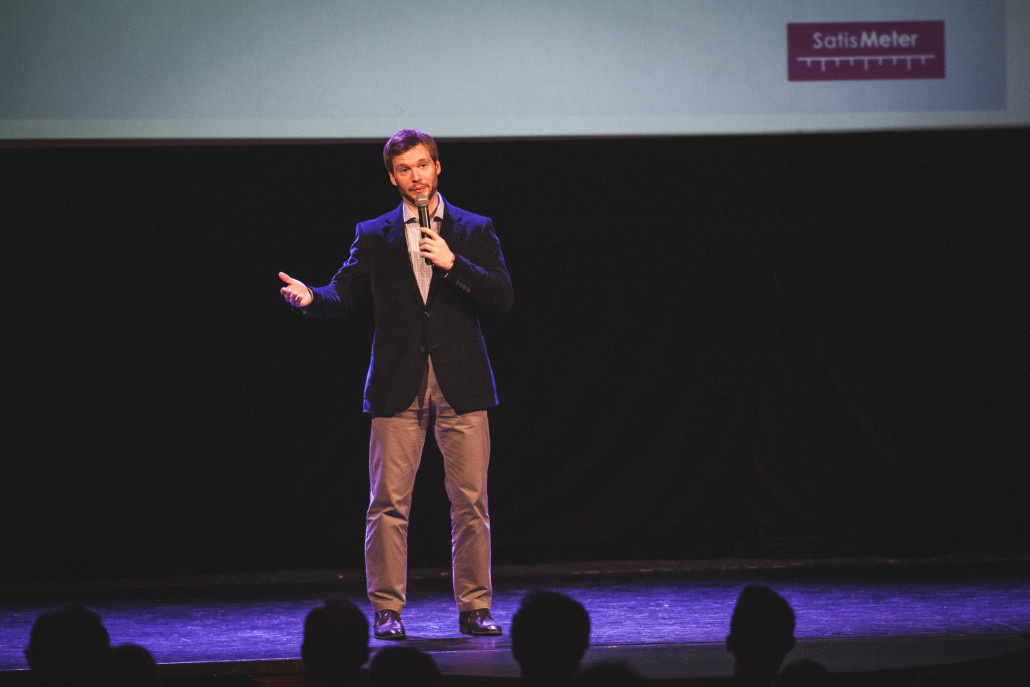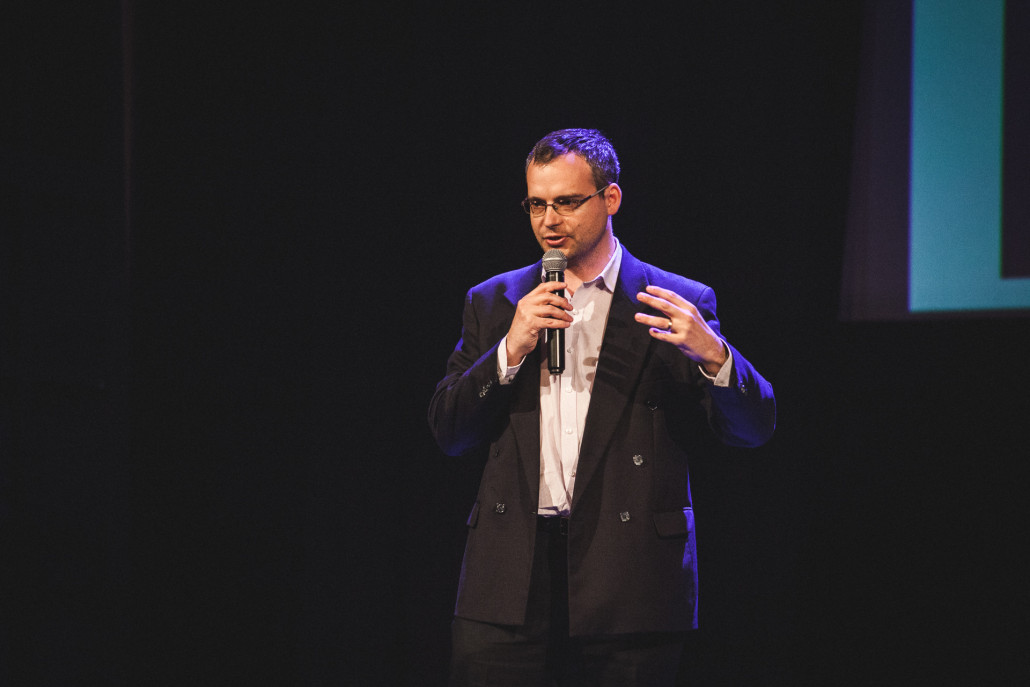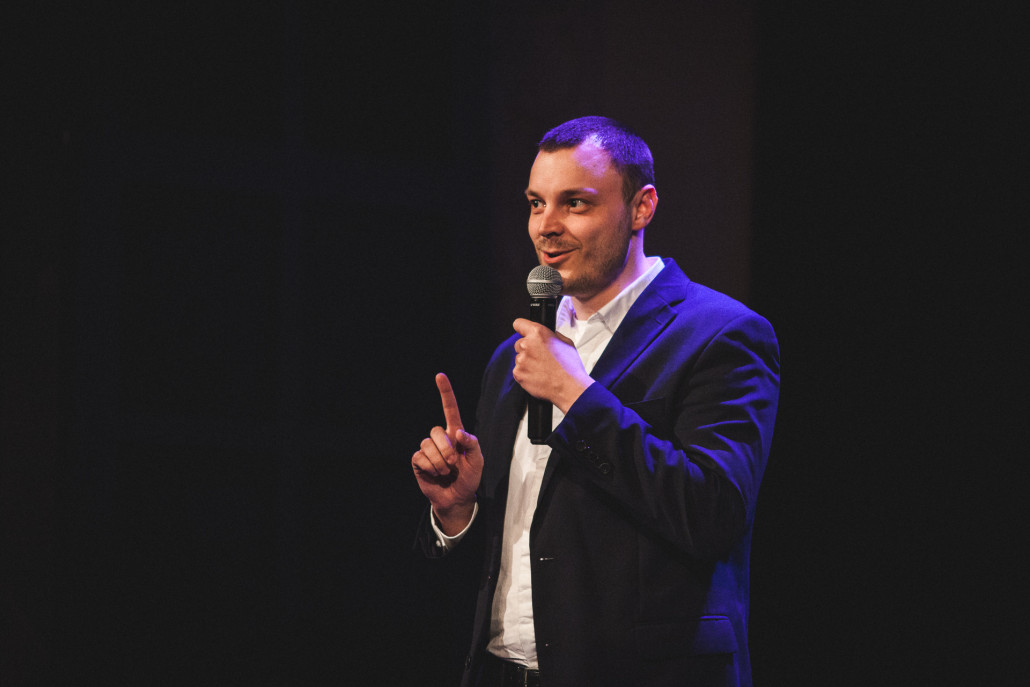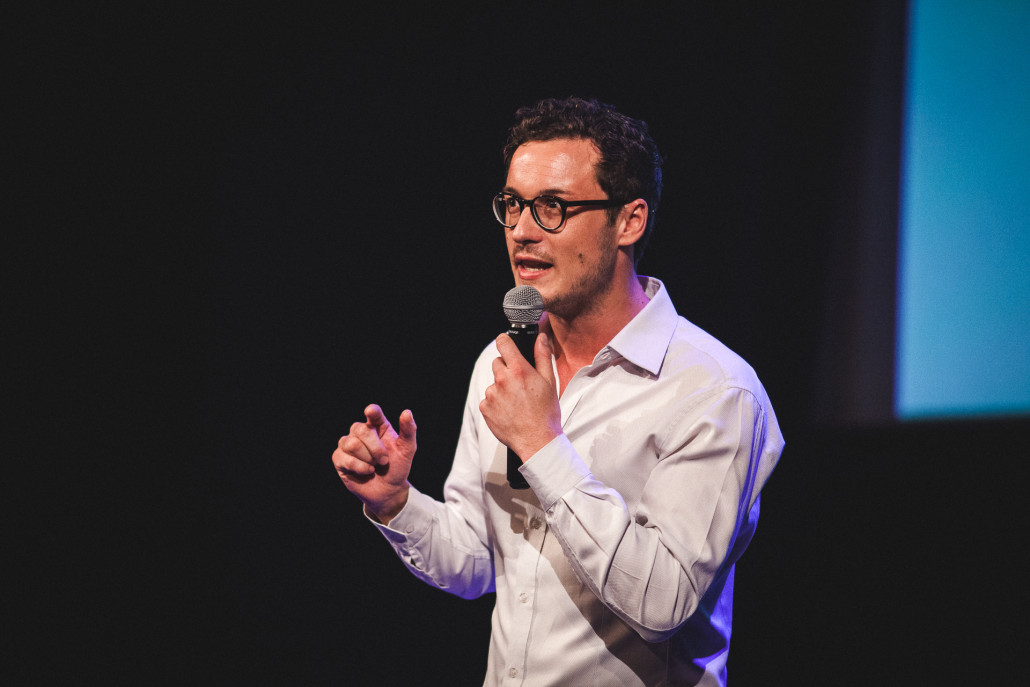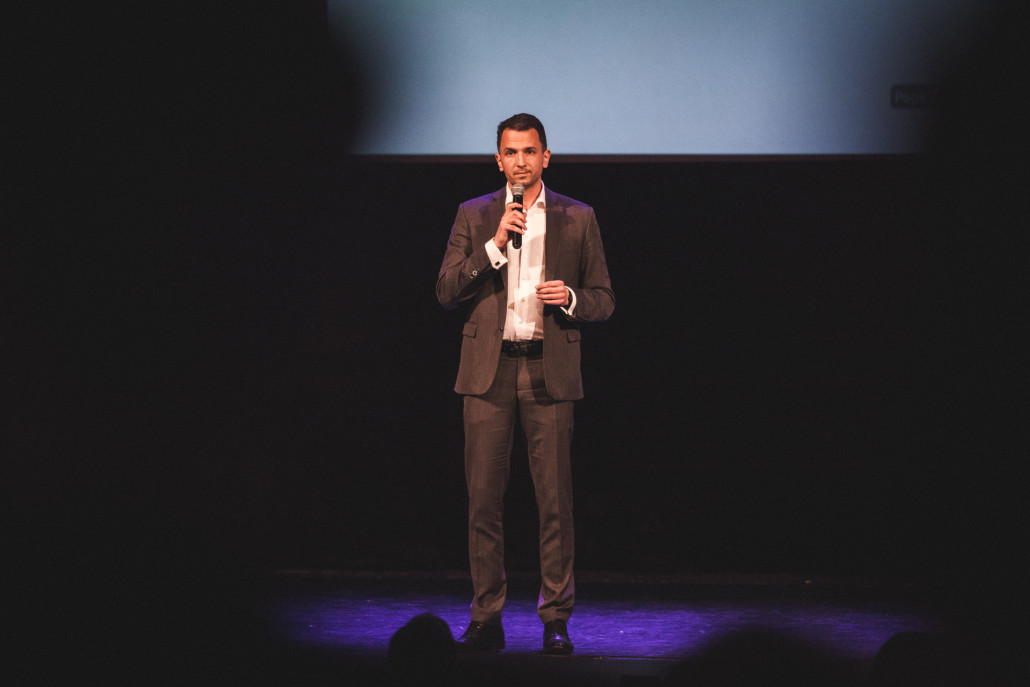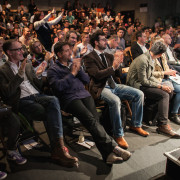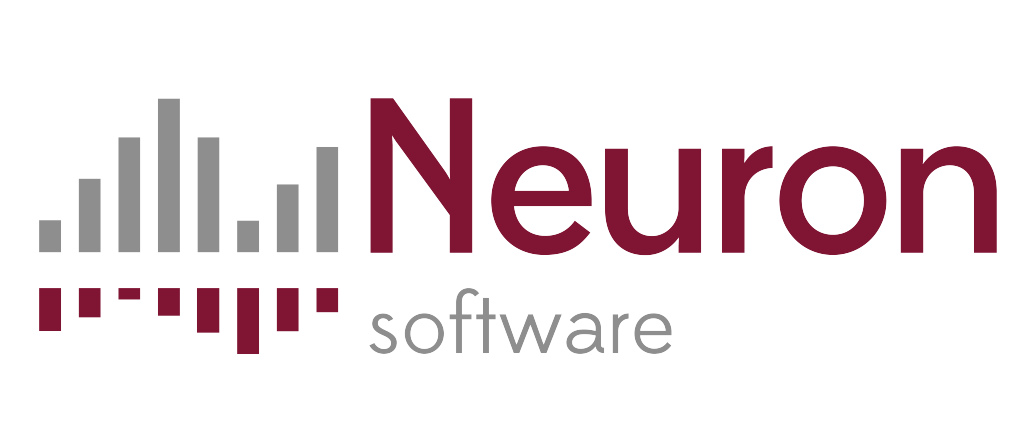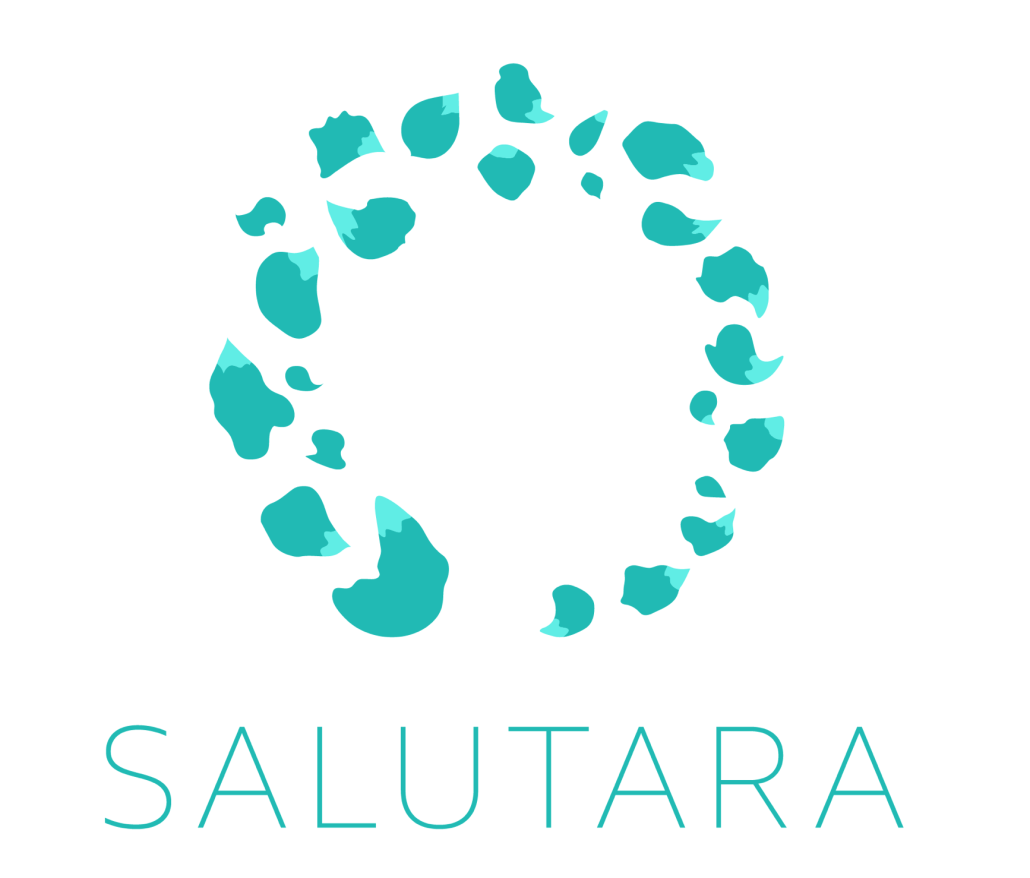StartupYard Alum SpeediFly Raises 300K In Seed Funding
/in Financing, Startups, StartupYard News/by StartupYardFor the second time in a matter of a few weeks, StartupYard is very pleased to announce that yet another StartupYard alum, SY 2016’s SpeediFly, has raised 308,000 euros in seed investment from Czech startup investor Petr Zamecnik.
Congratulations @SpeediFly raising 300K from Czech investor Petr Zamecnik via @startupyard Share on XThis is Zamecnik’s second investment in a StartupYard startup- it follows the recent announcement of his involvement with BudgetBakers’ (SY 2015) comparatively sized funding round. The investment includes follow-on financing from StartupYard, in the form of an equity-free grant, supplied thanks to the European Commission’s FIWARE Accelerate program.
Making Sharing a Flight as Easy as Sharing an Uber
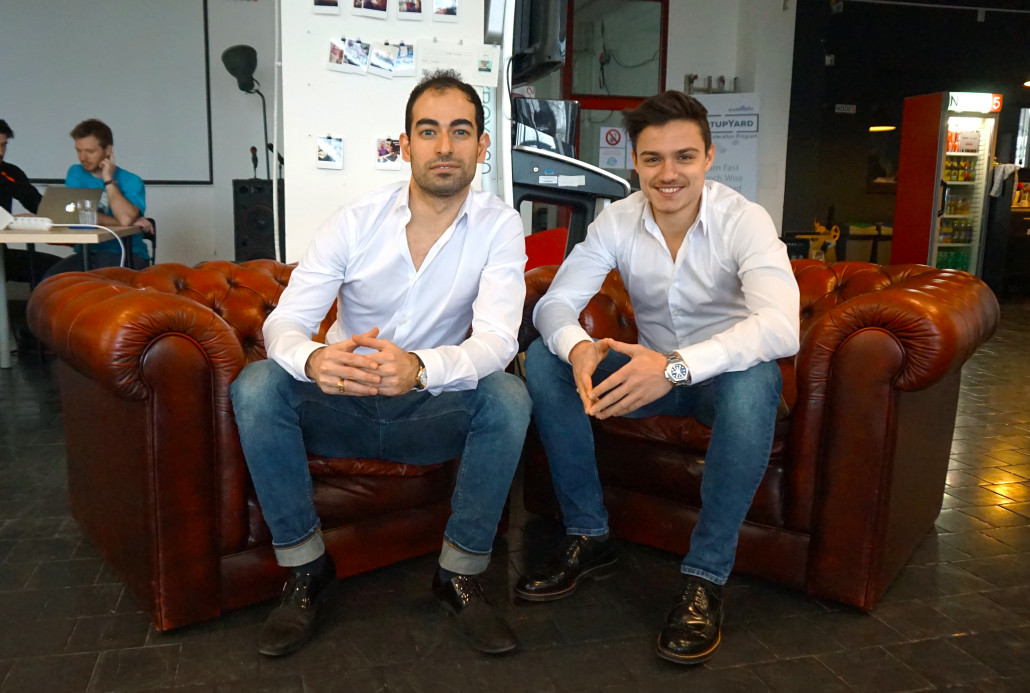
Co-Founders Alex Karadjian, and Stoyan Dobrev
The team, which will work from both London and Sofia, Bulgaria, has launched a private beta in London, where it acquired its first customers in April this year. SpeediFly is a mobile-first travel platform that aims to make booking a last minute flight, even as a group, as easy as sharing a ride on Uber.
The funding will be used to expand the Bulgarian development team, and launch SpeediFly in several European markets, including London, and other major travel hubs.
The team also plans to develop the social travel aspects of the platform, as well as interest based travel recommendations that will allow travelers to combine their favorite activities with the best last-minute travel deals.
Currently in beta for iOS, SpeediFly also plans to expand to Android and the web. The new funds will also be used to expand the platform’s smart recommendation and group booking systems, two core features that will differentiate the startup from other entries in last-minute travel.
A Czech Investor on the Move
Our own Managing Director Cedric Maloux said of the investment round: “It’s not every week that two great companies from our portfolio get the financing they deserve. Zamecnik has made two smart and gutsy moves with these two startups [BudgetBakers and SpeediFly], and we hope that his peers in the region and abroad will take notice.”
Also commenting on the investment was SpeediFly’s Co-Founder and CEO Alex Karadjian, who said: “this will help us scale super quickly and go to new markets, but what is even more exciting to me, at least at this early stage, is the natural bond our team has had with Petr from the very moment we met. Petr’s fast-moving style as an investor and businessman perfectly aligns with the spirit of our team and with our concept- which is all about spontaneity and fun. I am sure this is going to be a great journey together.”
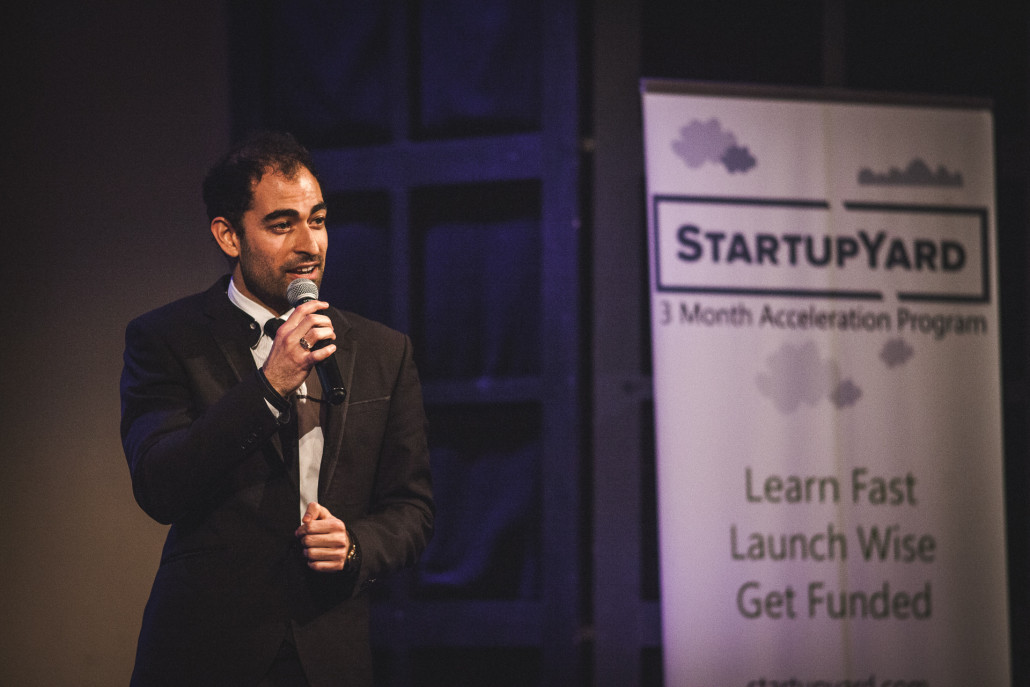
Alex Karadjian of Speedifly talks about social, spontaneous air travel at StartupYard’s 2016 DemoDay
SpeediFly was founded in late 2015, and joined StartupYard in 2016. It aims to be the market leader in mobile-first, social, last minute travel. In the UK alone, the company estimates that there is an untapped potential of 10.2 billion Euros in the last minute travel market. In addition, 56% of European travel searches for last minute bookings are for groups of 3 or more- while none of the major meta-search engines specialize in group bookings, social features, or shared payments.
SY Alum NeuronSoundware Wins Vodafone Napad Roku
/in Financing, Startups, StartupYard News/by StartupYardWe are incredibly pleased to announce that StartupYard 2016 team Neuron SoundWare, has won the prestigious competition Napad Roku. Napad Roku is put on by Vodafone Foundation to find the best ideas from Czech and Slovak startups, and bring them onto the global stage.
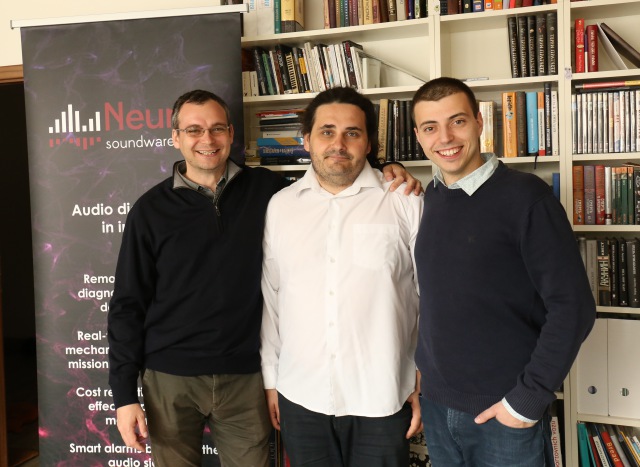
The Neuron SoundWare Team: Photo by Forbes.cz
Also among the top finishers was our own Salutara, enabling medical travel worldwide. This win represents yet another in our alumni’s series of recent successes.
The prize includes 300,000 CZK (11,000 Euros) from Vodafone Foundation, additional funds for legal services, and new tablet computers.
Napad Roku: The Best of Czechia and Slovakia
Neuron Soundware, led by Co-Founder and CEO Pavel Konecny, won out against over 170 competing startups. The company is building a framework for neural networks to understand, learn from, and process sounds. As reported by Forbes recently This will enable their technology to, for example, diagnose technical problems in heavy machinery and sensitive hardware, including such things as 3D printers, car engines, and air conditioning systems, among much else.
The technology can also be applied to the voice: at StartupYard’s recent DemoDay, where Neuron Soundware premiered the pitch that won at Napad Roku, Konecny demonstrated how a neural network could listen to, and then perfectly reproduce a human voice, opening up the possibility of using natural human voices instead of computer generated voices in any range of applications, from call centers to robots. The technology also makes manipulation of the voice possible, changing accents, inflections, emotional tone, and much else.
This opens possibilities for the NeuronSoundware team in a wide range of industries, from AI personal assistants like Viv, to industry 4.0 and distributed “contour” manufacturing technology, where more and more products will be fabricated in smaller factories, closer to their destination markets.
Congratulations to Pavel and the whole NeuronSoundware team!
 Pavel with CoFounder Filip Sedlak
Pavel with CoFounder Filip Sedlak
 Pavel Konecny, CoFounder and CEO
Pavel Konecny, CoFounder and CEO
SY Alum BudgetBakers Raises 300K, Welcomes New CEO
/in StartupYard News/by StartupYard
It’s our great pleasure to confirm today that BudgetBakers, a StartupYard 2015 alum, has raised a combined €290,000 in seed funding, from investor and gaming magnate Petr Zamecnik and former CEO of HomeCredit and GE Money, Ivan Svitek. Along with the funding round, BudgetBakers also announced, via Lupa.cz, that Michal Kratochvil, former Director of Accenture in Central Europe, has joined as the startup’s new CEO.
The team, formerly led by Jan Muller, who will remain as the company’s CTO and product manager, plans to roll out a full-featured personal financial management suite in 2016, accessible via web, Android and iOS, and has announced a series of integrations with partnering financial institutions, allowing its users to access their various financial services in one place. They will be capitalizing on new EU initiatives which encourage banks to integrate more closely with 3rd party finance and e-commerce platforms.
Since 2015, BudgetBakers has surpassed 1,000,000 downloads on Android, and is ranked among the most popular products in the AndroidPlay store for budgeting and expense tracking.
A Finance CEO for a Fintech Startup
Michal Kratochvil brings decades of experience in banking to his new head role at BudgetBakers, where he intends to push the company towards closer cooperation with consumer banking in Europe, and worldwide. On his new position, he said this week: “I’m pleased not only at the opportunity to lead a dynamic startup in a whole new and unexplored business, but also to bring my years of experience working with banks to bear in helping BudgetBakers forge new partnerships, and create amazing customer experiences in personal finance.”
StartupYard Managing Director Cedric Maloux was also pleased at the news of another in a series of recent successes for the accelerator, saying: “When we accelerated BudgetBakers in the Summer of 2015, they already had a very promising product with a large number of installs, but close to zero revenue. After 3 months at Startupyard, [BudgetBakers Founder] Jan Muller and the team focused on building a strong business model and B2B distribution channels. Today’s announcement is a confirmation that this work is paying off, and Michal joining as CEO is just going to put them into a new gear.”
We want to take this opportunity to congratulate Michal, Jan, and the whole BudgetBakers team on this big step towards realizing their goal of becoming an indispensable part of personal finance for people all around the world. Way to go!
Exponential Innovation: Preface
/in StartupYard News/by StartupYard“We are on the edge of change comparable to the rise of human life on Earth.” – Vernon Vinge
Last week, StartupYard managing director Cedric Maloux spoke about “Exponential Innovation” at the “What About Innovation” meeting of the American Chamber of Commerce in Pristina, Kosovo, on the invitation of StartupYard alum Gjirafa.
The talk dealt with a simple, but broad based question: Is Exponential Innovation an Opportunity or a Threat to Society?
The talk proved to be very popular, and raised ideas that the StartupYard team felt should be explored in more depth. So, during spring and summer 2016, StartupYard will be working on a series of blog posts around this topic.
Exponential Innovation
The central premise of our series on Exponential Innovation will be this: exponential growth in the complexity of technology, reflected in increasing computing power and capacity, the explosion of data and increasingly complex and powerful material sciences, is a reality in our society, and will have an ever increasing influence over society and the world economy for the foreseeable future.
Exponential innovation raises important questions and concerns:
“What role will humans play in a society where most existing jobs can be done more efficiently by machines?”
“Is the current 40 hour model of work-based employment viable going forward?”
“What will be the roles of work and employment in the near future?”
“Which jobs are immediately at risk? Which ones are at risk long term?”
“What will be the role of education in a world where intellectual labor is increasingly automated?”
“How will innovation change the role of money in our lives, as the need for a traditional workforce decreases?”
“How will governments and societies adapt to rapid advances in artificial intelligence, and its growing role in business decision making?“
For more on this topic, check out this fascinating weekly newsletter from Azeem Azhar:
Defining Our Purpose
For centuries, conversations around technological progress have been surrounded by, on the one hand, fear and apprehension about change, and on the other, excitement at the prospect of a better, happier, safer and more fulfilling life.
The world in the midst of the industrial revolution in 1840, and the world of 2016 are very different places, and yet these dual feelings of apprehension and expectation have not changed. In both eras, automation is viewed as both a threat and a deliverance. But whereas the industrial revolution replaced much routine manual work, the current technological revolution will replace many non-routine cognitive tasks.
At the same time, many of our startup founders and mentors express a certain fatalism about innovation. They say, in one form or another: “The robots will take our jobs, and so you’ll either have to own the robots, or you’ll have nothing.”
Is that really the case? Is it the inevitable outcome of rapid innovation?
Then, as now, governments and society had the capacity to evolve the function of money, ownership, and work to adapt to a changing technological reality. We are already seeing a rise in extreme political movements, from the mid-east to the Americas, fueled in large part by the diminishing role of the middle class in the new economy.
Will we see political changes as profound as those of the industrial revolution in the near future? Will innovations like Universal Basic Income (UBI), become essential elements of the new, post AI economy?
The primary purpose of this series will be not to argue in favor of one particular view of modern society, or to espouse one particular political or economic agenda. Instead, it will be to inspire conversations about pressing topics for the many millions of people, in Europe and around the world, who are facing a future that they find difficult to understand, and even harder to predict.
What are we, as workers, as entrepreneurs, as citizens, or as members of society and actors in our economy, working towards? What future are we building for ourselves? These questions are highly relevant to the work of StartupYard, and to every one of our members, alumni, mentors, partners, and investors, as well as the millions of people who will be touched by the technology we invest in, and help to foster.
French Ambassador Hosts StartupYard Mentors
/in StartupYard News/by StartupYardLast week, the StartupYard team, our 2016 startups, and over 70 of our mentors were honored by a special gala dinner, hosted by the French Ambassador to the Czech Republic, Jean-Pierre Asvazadourian.
The event which included several speakers, a dinner and a reception, and was sponsored by Komercni Banka, Mazars, and Roland Berger, Cedric Voight of Ballou PR gave the keynote remarks. Voight spoke about the importance of storytelling for both startups and corporations, and on the need for corporations to foster innovation in their own regions. Ballou PR is a major PR firm based in Europe, founded by Colette Ballou, with current and former clients such as Facebook, Ebay, Pinterest, and Waze.
Among the speakers were also StartupYard mentors Philip Staehelin, Managing Partner of Roland Berger in Prague, Albert Le Dirac’h, Chairman of KB Bank, and Carlos Meza, representing Mazars.
This event was planned in cooperation with our partners as a thanks to our incredibly dedicated and helpful group of mentors, over 70 in all, who took part in mentoring our 2016 cohort of 9 startups.
All photos are courtesy of the French Embassy, Prague.
France and The Czech Republic
A clear theme of the evening, given the speakers and venue, was furthering cooperation and knowledge transfer between France and the Czech Republic. StartupYard Managing Director Cedric Maloux, and Ambassador Asvazadourian spoke about the lessons that the Czech government and tech community could take from France’s experience, including greater tax advantages for technology startups, startup visas for entrepreneurs, more public funds for innovation, and greater corporate interest in funding new ideas.
Maloux also spoke about the need among corporations and governments, for touchpoints with the startup ecosystems in their respective countries, and abroad. He laid out his view of StartupYard, and other seed stage accelerators, as key points of interaction between older business and government institutions, and a new generation of entrepreneurs and technologists.
Philip Staehelin of Roland Berger spoke about his passion for bringing corporations and banks into closer cooperation with startups, and learning to adopt startup-inspired processes and entrepreneurial thinking within their own organizations.
Mr. Le Dirach, who has worked in banking for over 3 decades with Societe Generale, and now as the Chairman of KB, spoke about the need for smarter regulation of e-commerce, fintech, and information security. He also touched on KB’s efforts to open its doors to innovative startups, highlighting the need for corporate and banking executives to “get out of the office, and talk to real people outside our organizations.”
The French Embassy
The Ambassador also highlighted the role of the French Embassy as an organization with multiple missions. On one level, it promotes French business interests abroad, and on another, it seeks to promote mutually beneficial exchange of ideas between the two countries.
Ambassador Asvazadourian also pointed out the contrast inherent in the venue- the 18th century Buquoy Palace, with the topic at hand. He spoke about the need for older institutions, including those present, as well as the governments of both countries, to adapt and learn from startups, and new conceptions of working, and living.
StartupYard DemoDay 2016 Highlights
/in Startups, StartupYard News/by StartupYardDemoDay 2016: The Big Moments
StartupYard last night introduced its 6th cohort of startups to the world. We are extremely proud, and judging from our community’s reaction, so were you. Thank you for supporting us and encouraging us to do what we do. Your value to our startups is truly immeasurable.
But which of the companies at DemoDay 2016 were your favorites, and why?
Click on the picture of your favorite startup founder below to tweet about them.
(Photos courtesy of Milos Potuzak. Check out his other work on his website, or on Facebook.)
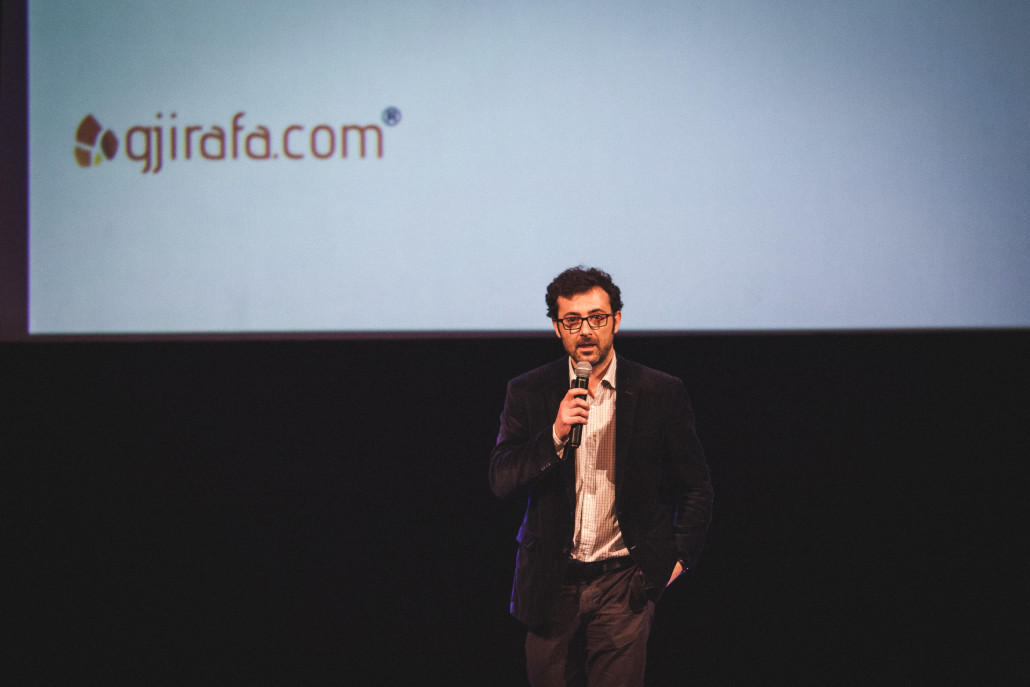
Gjirafa Founder and CEO Mergim Cahani talks about the ups and downs of founding a high growth startup. Click to Tweet!
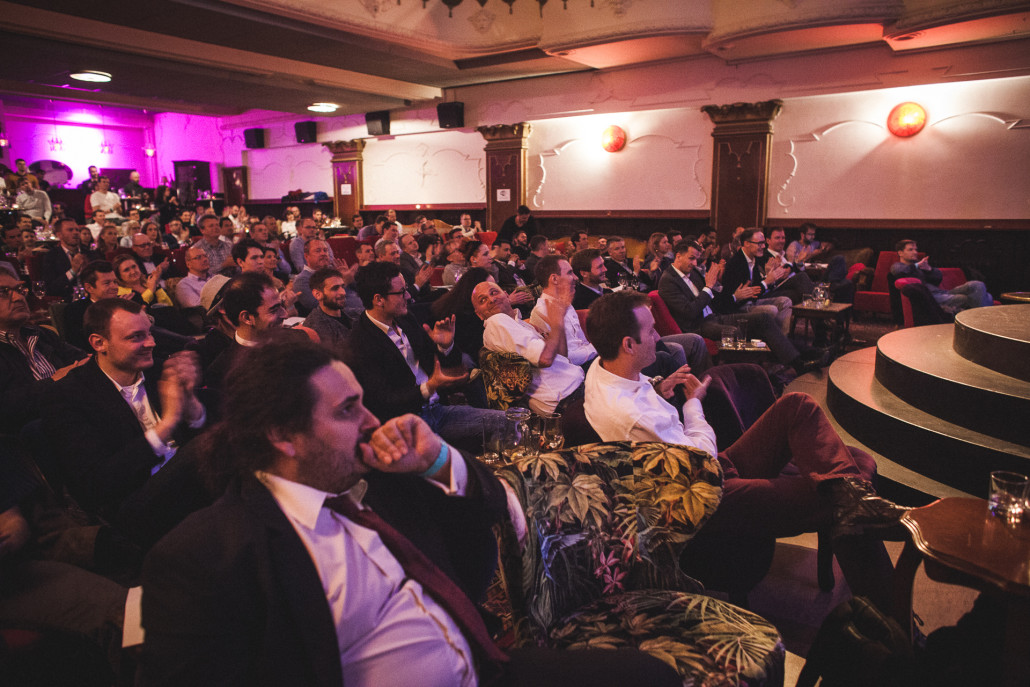
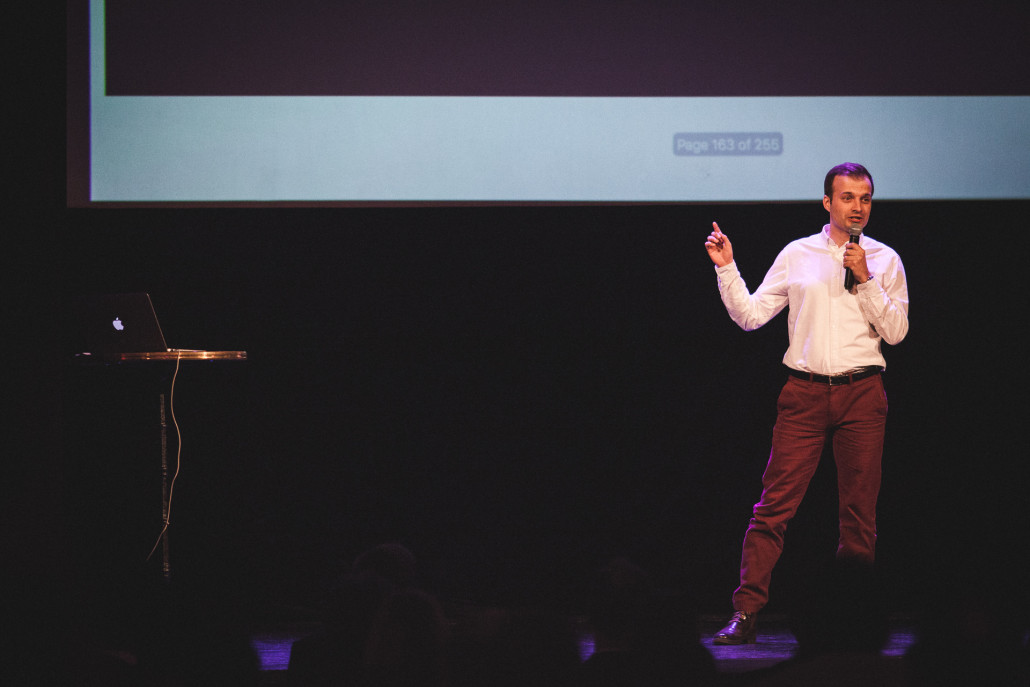
Piotr Piekos of TotemInteractive introduces the future of outdoor digital advertising. Click to Tweet!
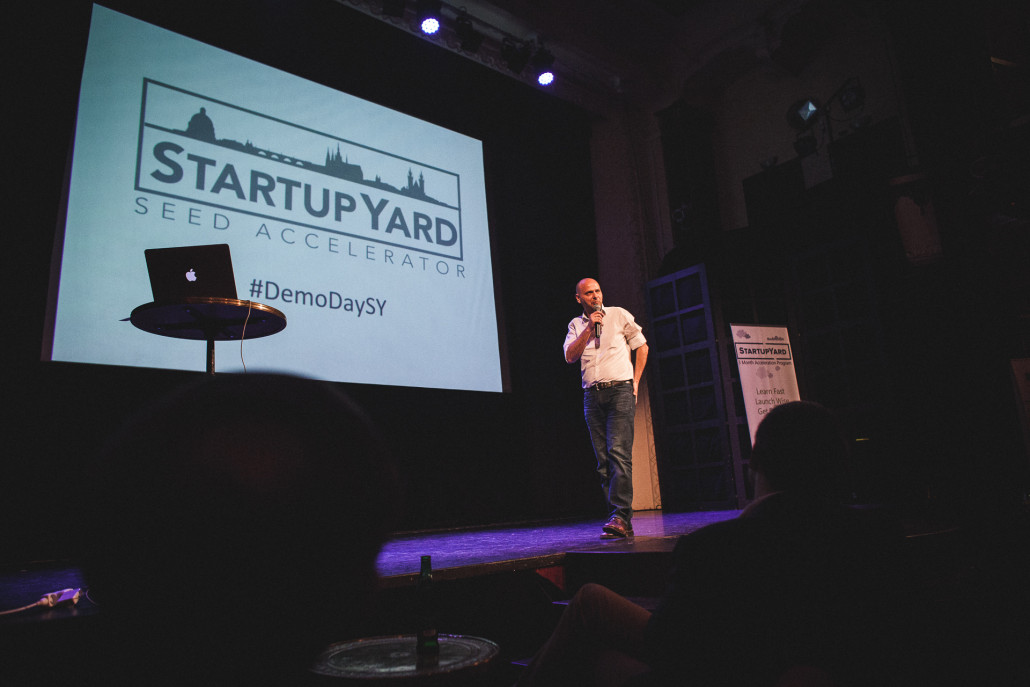
Cedric Maloux makes closing remarks.

The Royal, a classic venue, for a not-so-classic event.

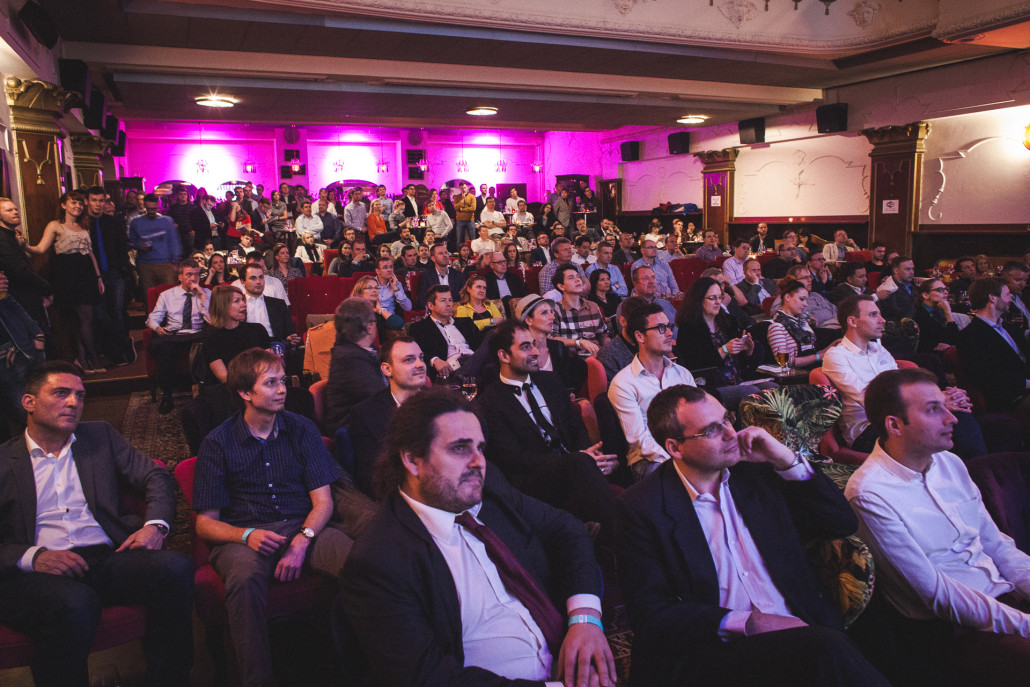
The crowd at The Royal was impressive.

Don’t forget to check out our exclusive interviews with each Startup from 2016:
TotemInteractive: Make Ads People Love
/in Interviews, Life at an Accelerator, Startups, StartupYard News/by StartupYardTotemInteractive, StartupYard’s first Polish startup team, came to StartupYard with a novel concept, and has executed on a broad vision to change digital outdoor advertising in a major way. The team, experienced in digital media and cloud systems, is creating a platform into which marketers and advertisers can put their creative energy to generate meaningful, lovable, interactive display ads in place of boring, old fashioned posters and billboards.
I caught up with Piotr Piekos, CoFounder and CEO at TotemInteractive, to talk about the future of outdoor digital advertising, and cloud based marketing. Here’s what he had to say:
Hi Piotr, tell us a bit about TotemInteractive and your team. How did you come up with the idea?
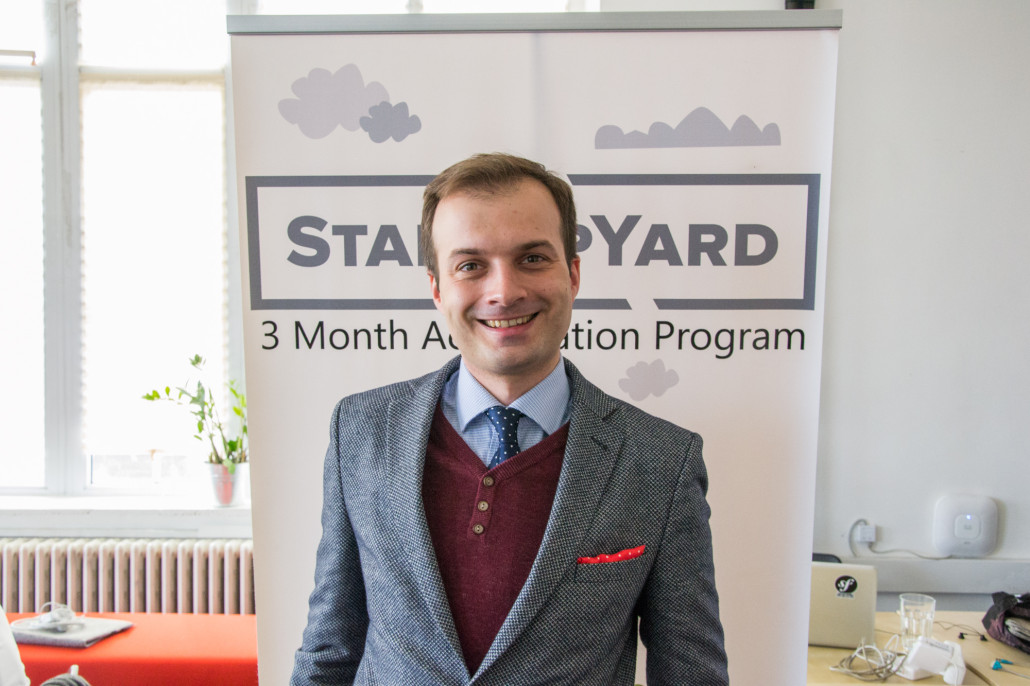
Pietor Piekos, CoFounder and CEO at TotemInteractive
TotemInteractive is a software platform that aims to help marketers with deployment and performance measurement of cross-platform, interactive marketing campaigns launched on electronic screens in public and in-store locations. Basically, interactive display advertising, instead of boring old posters.
The idea came from our observation of two trends: the propagation of digital screens in public spaces, and the fact that mobile devices have become an inseparable part of almost every activity that we do outdoors. TotemInteractive believes that digital advertising outdoors as often depicted in scfi movies in not just an imaginary future. We think that it is a natural consequence of the mobile and IoT revolution. TotemInteractive’s plaform aims to be among the first players on that market.
You have a background working with digital agencies. How does that help you when it comes to creating a platform for digital interactive ads?
Throughout my professional career I had seen a number of solutions aiming to resolve the problem of unified and streamlined visual communication across different devices. Some of them already succeeded in industries like gas and oil (crisis centers) or places like decision-support systems for high-level corporate executives.
Budget constraints are less of a worry for these types of businesses, allowing the vendors to reach high complexity and sophistication with the systems they deploy. I have been involved with several dozen such products. Knowing exactly what our target market (advertisers) expects, we are able to provide a lean and user friendly answer to the market demand. In short: we want to move what is already possible with multi-million dollar equipment to the world of advertising, where price is always a consideration.
What about your team? How are you uniquely qualified to bring display ads into the modern age?
To answer this question, I will first need to explain a bit about the requirements for the platform. We had composed a team with very technical specific requirements in mind: such as quality of service (your ad has to be there at all times), and scale (platform needs to work on hundreds of screens simultaneously).
Our team consists of people who are experts in building complex, distributed systems. Michal is a system-engineer who is a specialist in cloud based deployments. Kamil and Piotr have been working on large scale deployments of tailored B2B systems for years.
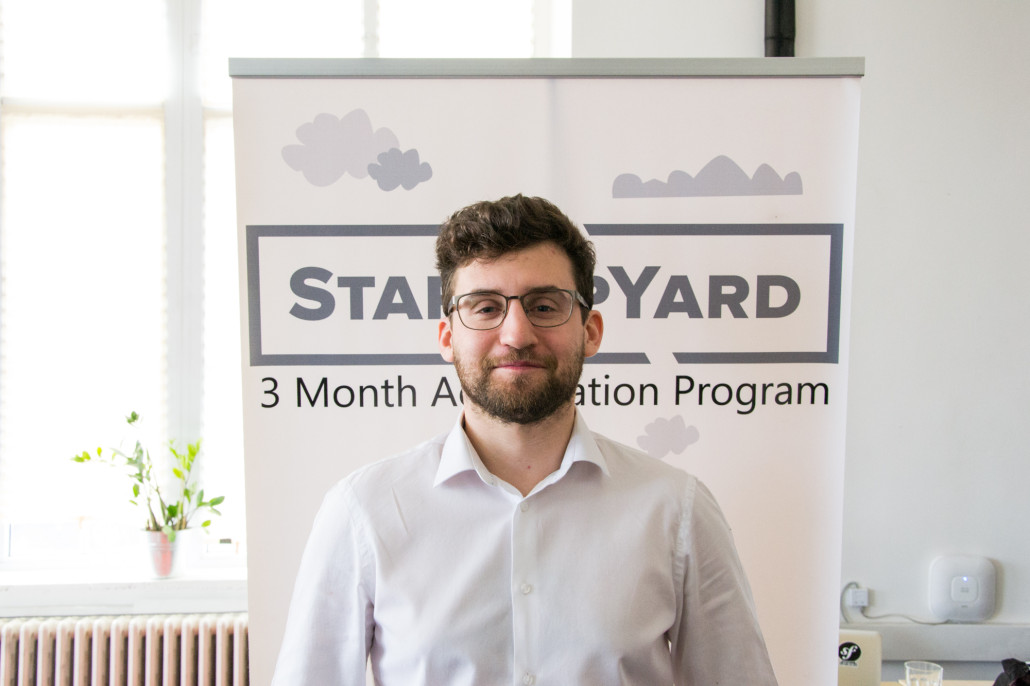
Leszek Knoll
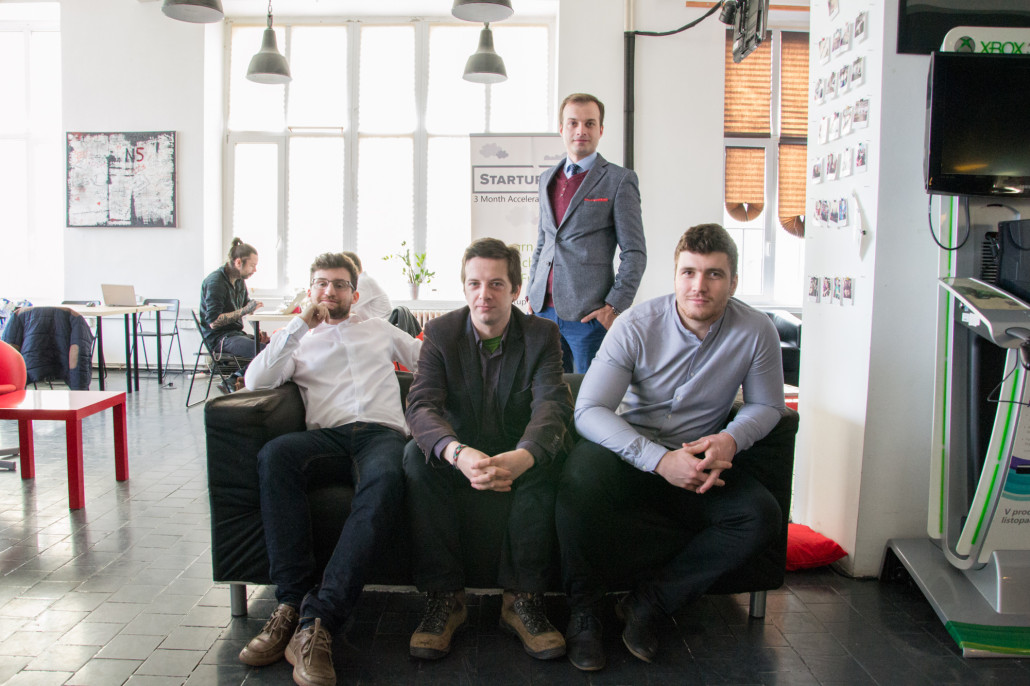
The TotemInteractive Team
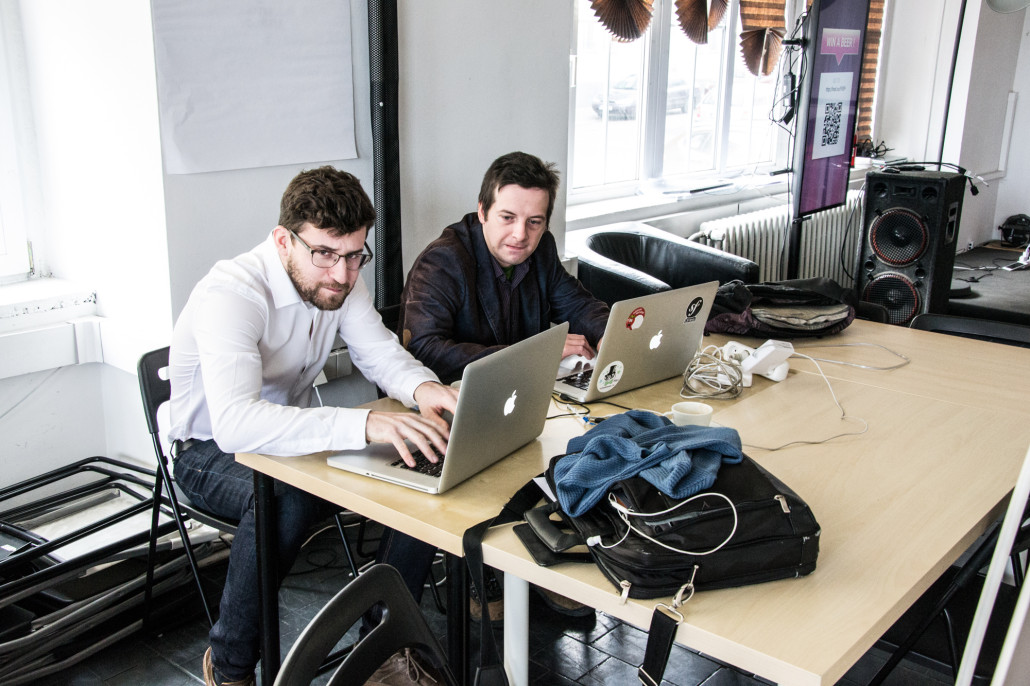
The Totem Interactive Team Hard at Work
On the business side: Leszek Knoll, my CoFounder and COO, brings startup entrepreneurial experience on board. He had built startups in the past and knows well the rules of the game.
I have been working in professional audio-visual industry for several years: my expertise is based on several dozen deployed, consulted and rescued projects related to large scale visualization systems. Lastly, we are backed by several mentors who hold strategic positions in advertising segments: in agencies, brands, and large media-house conglomerates.
Tell us a little about how the TotemInteractive platform works. What does it enable advertisers to do?
TotemInteractive makes it possible to directly interact with a big digital screen in public spaces using your mobile phone. It can be a game, where you use your mobile as a controller, or a socially engaging voting system for your favourite band during the music festival. Whatever you can image.
Our platform stays hidden behind the scenes, a cloud based system that supports various applications for live screens. It’s a sophisticated enabler, allowing marketers to very easily create and deploy interactive campaigns, without a need to engage substantial resources to prepare, code, test and deploy their own cloud based or local solutions.
How is TotemInteractive different from traditional static display ads?
It is not boring! Our platform transforms traditional ads into something that delivers real value to the consumer. Suddenly, those displays become engaging, fun and an experience sharable with others.
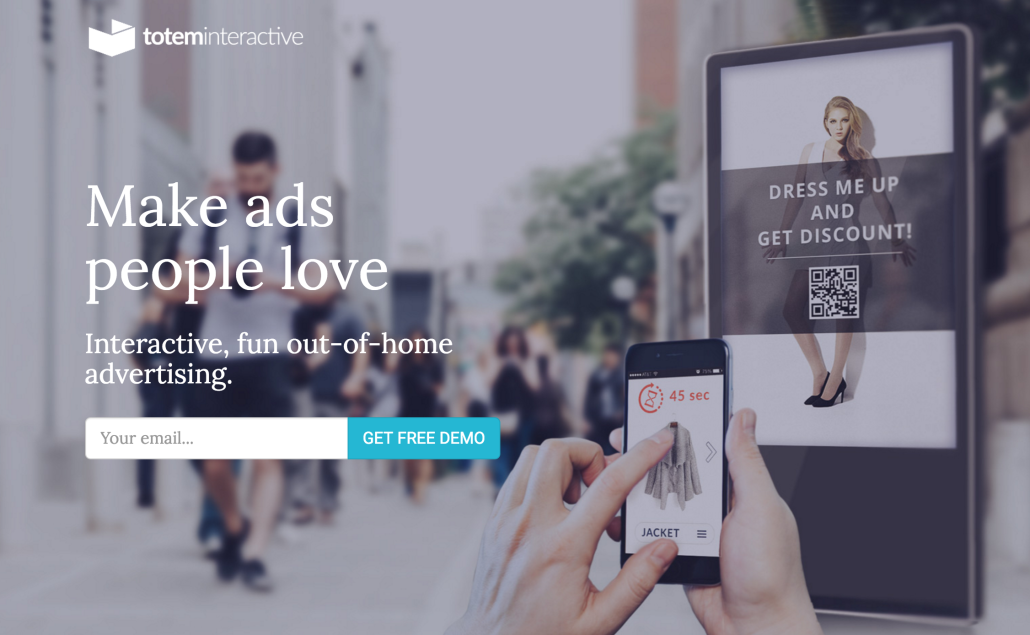
You’ve already run a few pilot campaigns. Can you tell us a little about how these worked, and what the results were?
Even though our MVP is still in development phase, we had done a proof of concept campaign during a job fair, at Silesian University of Technology. Our results show that, first of all: people are really keen on interacting with this new type of medium, when the motivation for doing so is clear.
Registering more than 10 engagements per hour, per screen, gives us good reason to believe that such advertising can be much more effective than traditional display ads. Not to mention, that 42% of the people who played our game were willing to share their Facebook data with us through the platform. Try doing something like that with a poster.
You have spent quite a bit of time identifying market needs and exploring different approaches to the market. What has the exploration process revealed that you didn’t know a few months ago?
Major conclusion was that a seed-stage startup will have very hard times when it comes to deployment of a platform across multiple screen networks. We had found out that it is a very capital intense goal, that we simply cannot afford to chase at this moment.
What are your immediate plans for expansion? What does TotemInteractive have planned for the next year?
We want to reach the retail market (in-store digital signage, banking, car dealerships). Gradually we also want to move to the events market. In the next year we want to be recognizable by marketers in CEE and western Europe as these guys that can put their creative, potentially viral, ideas into motion.
Long term, where do you want to be in 5 years?
Market leader in interactive digital signage! We want to provide marketers not only with technology, but with unsurpassed reach (network aggregation), for their digital outdoor campaigns.
How has StartupYard shaped the company’s growth in the past 3 months? Are there any particular mentors who had an outsized impact on your team, direction, or traction?
Well, StartupYard was immensely helpful in terms of momentum that our business reached during this time. Definitely, mentoring was a revealing and beneficial experience for us. It was about knowledge sharing, feedback (both positive and negative), but also some of the mentors allowed us to enter real sales opportunities that we are chasing at the moment. Without SY it would not be possible. But not only that: I believe that our business development potential is now multiplied by your expertise in marketing and the power of your network.
Stream.Plus: Netflix for Brands
/in Interviews, Life at an Accelerator, Startups, StartupYard News/by StartupYardStream.Plus is the last video platform brands will ever need, according to Founder Marek Novy. Late of Seznam.cz and also a longtime StartupYard mentor, now turned StartupYard member, Marek has spent his career in digital media, and says that the current video advertising market is fundamentally broken.
Stream.Plus is designed to offer brands, as well as viewers and video curators, a better model for monetization of high quality branded video, and the growth of MCNs (Multi Channel Networks). Stream.Plus is based on a viewer-centric approach to online video, and bills itself as “Netflix For Brands.” I caught up with Marek this week to talk more about his startup: Stream.Plus
Hi Marek, Tell us a little bit about yourself and Stream.Plus.
My passion is learning and building new things, it is my name anyway- [Novy means “new” in Czech]. I quit my job at Seznam.cz, because I feel I have to do much more learning and building than I was able there. But it get me thinking about future of media and I also met my cofounders there. Stream.Plus is the materialization of our vision of where media, and specifically video, is going.
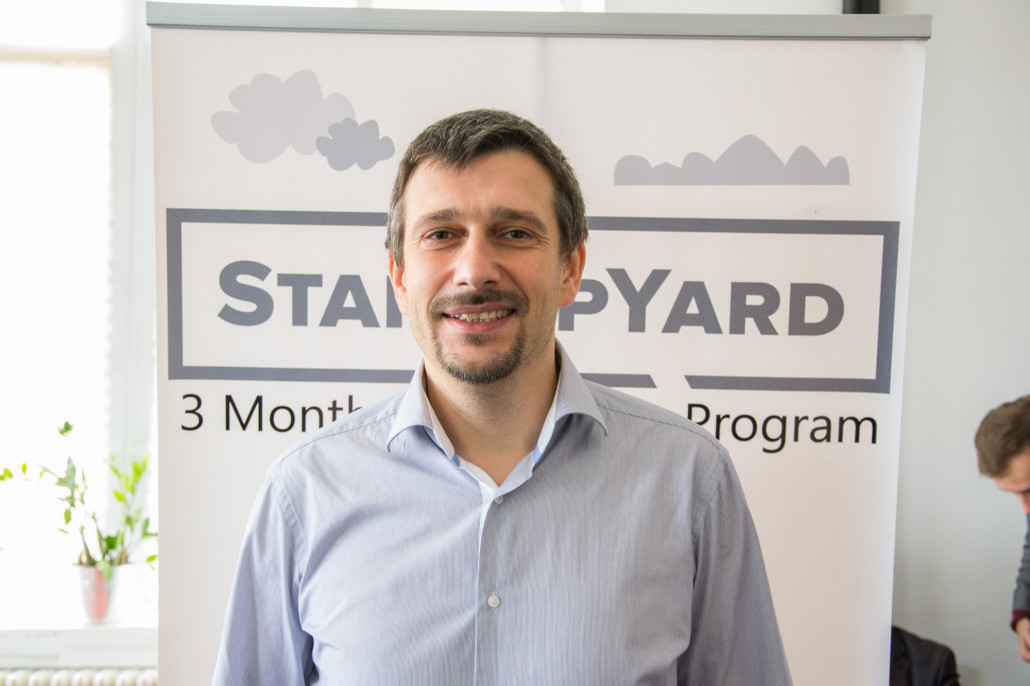
Marek Novy, Founder and CEO at Stream.Plus
What makes Stream.Plus different from other streaming video platforms? What can you do that can’t be found on YouTube or Facebook?
The most important difference for me is the purpose, even though it might be not so obvious. Our purpose is to help organizations, brands or individuals to build and operate their own media properties so they can have a direct relationship with their customers. The real business purpose behind YouTube or Facebook is to be a middleman between users and brands so they can sell user’s attention to advertisers.
That’s a basic conflict between brands and companies like Alphabet and Facebook. The interest of the brand is more and more in building an audience for their product- not just selling products one by one, but developing customer loyalty around the brand and the ideas and culture it is a part of. But YouTube, as a particular example, has more of an interest in moving customers between channels- from one video to the next, in order to display their direct advertising.
For YouTube, it is of more value to have a user not remain in one particular stream of content- but instead to jump around to allow different ad-impressions to be sold at higher prices. Basically, the user is the product, and advertisers are the customer. That model is becoming quite unsustainable- especially when you consider that typically, YouTube users now skip video ads within seconds- which drives YouTube to make their ads more aggressive, and more pervasive.
On a product level Stream.Plus is primarily about human-created playlists. They are important, because they drive a type of user experience which is really missing in online video. Human-created playlists are trending in streaming music and they have even stronger value in video. We improve playlists to combine short and long form content so that users can choose how much time they spend on a topic.
The big difference here is that we preference real users’ interests, and not that of advertisers. The media companies and brands on our platform will compete for eyeballs with their high quality content, not for the cheapest ad space available.
We also think that a video is a great tool for direct in-video shopping and lead generation. We provide conversion buttons in videos and eventually we want the whole buying process to happen inside a video. This keeps the customer’s interests as the main priority- people don’t want to be taken away from content they enjoy, and people want to have a relationship with the brands they buy from. We can accomplish both with Stream.Plus.
More and more, brands are becoming direct content providers, through Social Media, Youtube, and elsewhere. How can brands use Stream.Plus to help them build their audience?
Social media and YouTube are great places to be present in order to attract users. But sound brand strategy has to go beyond that. Otherwise a brand is being used by social media instead of using it.
Stream.Plus provides tools covering a complete user journey starting on branded social media channels or the social media channels of an influetial person, going through branded online tv properties, then mobile apps, and finally reaching a point when a user is ready to buy or provide a lead. This journey is about gradually building trust and earning permission to give a user a business proposal.
Brands have to accomplish that by creating content people want to see- not by forcing them to see content that they haven’t asked for.
How have MCNs (Multi-Channel-Networks), evolved in the past decade, and in what direction do you see the industry growing now?
MCNs are my favorite subject. They are essentially the most recent evolution of the media industry.
I think both traditional media and marketers can learn a lot from them. They’ve kind of organically grown out of the YouTube ecosystem. They started as pure aggregators of channels to get better deals from advertisers. Later they built various analytical tools and technology to help creators to be more successful. The most successful ones are actually those who thought beyond YouTube. They are building full-scale media companies potentially totally independent from YouTube, using the platform to their advantage instead of being used.
Multi-Channel Networks are not a small industry anymore. Many of the networks that were originally built on YouTube are now worth hundreds of millions of dollars as media companies, with their own loyal followings, products, and diverse revenue streams. We want to create a way for brands to jump into this next cycle of evolution in media, and grow where their audiences now live.
Let’s talk a bit about the service. What are some of the features that users can experience? What kind of content and experience are you going to provide?
I can best illustrate it with some examples. Let’s say you saw a post on FaceBook with a video that your friend shared about a musical. You click on the video to see what it’s about. You will end up on our platform watching a large, almost full screen teaser video about the musical, which is typically 20 seconds long. If you don’t respond to it, we will show you another teaser video, for instance, a Lion King. It is a great one, you actually want to really see it after watching that video. You can now directly book a ticket from the video or choose to learn more about show by watching more videos about it.
People want to be in control of their buying experiences more and more. They want the joy of discovery, not an advertising hammer, pounding on them to buy, buy, buy. We have to help brands evolve into the free-media space, so that they’re speaking the same “language,” as their customers.
Entertainment is a great vertical for us because trailer videos are often a joy to watch anyway. Interviews with actors, backstage videos, etc are all very interesting content to watch. This can be linked directly to ticket booking. Cars are another interesting vertical with videos like car reviews, tuning and car improvement tips, auto sport videos, drifting shows, etc. Fashion is another area we will explore by working with fashion retailers to essentially build a small MCN for them with selected creators to run many shopping channels in parallel for different audiences.
How do you plan to monetize Stream.Plus?
We have a free plan if you don’t need video hosting from us. Your channel will be a part of stream.plus web and mobile apps. This is a great option if you want to create a channel that is your own personal selection from other people’s videos on our platform or from YouTube. You can build an audience there and upgrade later without losing them.
Then we provide a subscription plan based on how many monthly active users you have. It includes video hosting and your own branded web and mobile apps. You can choose to integrate it into your main website or run it on a separate domain like “brand.tv.”
Next you can decide whether you want to work with our network of creators and social media influencers. They will either promote your product in their videos or recommend your content to their audiences. You provide them with your marketing brief and a reward for them which is typically a CPC or CPA model. We take a share of this revenue.
Can you talk more about the E-commerce potential in Stream.Plus? How can consumers use the platform for a better shopping experience
There are some categories of products which can be sold much better from video than webpages. In-video shopping is the next big thing in e-commerce. Honestly, there have been many attempts to do it, it is a kind of obvious, and they have all failed.
As usual, I think, there is no single key to break it, it will come from a right combination of several factors. YouTube is an obvious place, they have actually tried several times, but it is simply not compatible with their goals as a platform. There are so many distractions in YouTube’s UI, that a new buy button is yet another distraction. Our approach is no distraction besides call-to-action buttons during video viewing, to make it much more powerful. Affiliate programs for creators and influencers is another ingredient to make it work.
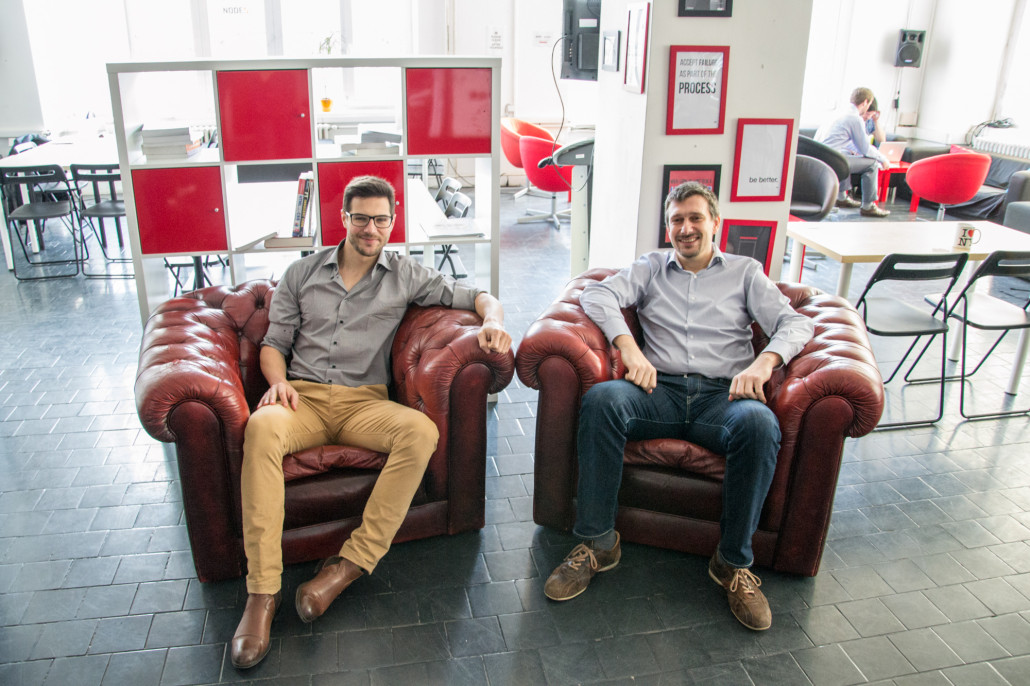
The StreamPlus Team
What’s been the biggest challenge for the Stream.Plus team since joining StartupYard? Why?
We are shaping our product offering into something our customers can easily understand and relate to. I have to thank StartupYard and all mentors that they have been a great help. Due to my online media background I tend to unconsciously expect that people have insight into media mechanics and that some trends are rather obvious. StartupYard and the mentors have opened my eyes to how important it is to be able to clearly communicate our vision and story.
People are currently obsessing about media ownership, but media was kind of “owned” by advertisers from the beginning.
Are there any particular mentors who had a disproportionate impact on your company’s development? How so?
There have been a bunch of mentors who provided valuable contacts and insights to us. I am currently waiting for a meeting in a big agency network, this type of partnership can have disproportionate impact on our development, but we don’t know yet.
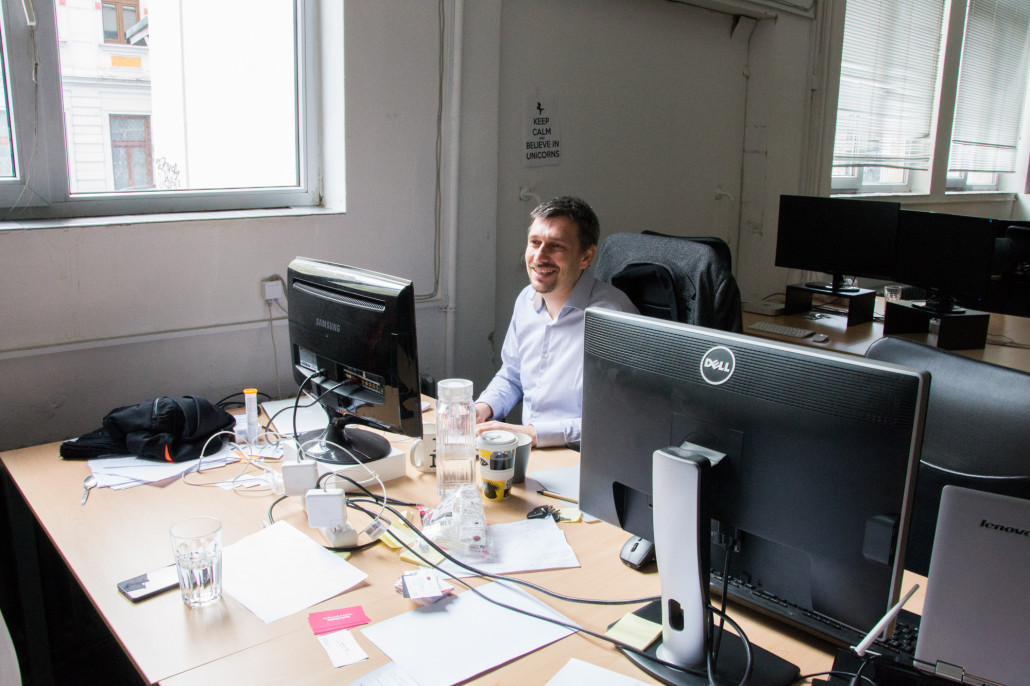
Where do you hope Stream.Plus, and branded video content in general, will be in the next 5 years?
The next 5 years will be quite dramatic for the TV industry, which is the last media sector to be really disrupted by online world realities, especially in the US, where the TV industry has been able to prolong the business status quo most successfully.
Stream.Plus wants to be a leader in permission based video content marketing. We want to define a new balance point between users as content consumers and marketers who are paying for the content. I think this relationship has to build from permission marketing principles (defined by Seth Godin in 1999) and transparency. Branded content channels are actually more transparent than “native” advertising on 3rd party media.
Are you currently looking for partners or pilot customers? How can people get in contact with Stream.Plus?
We are looking for forward thinking brands who are essentially willing to transform into media companies. We are also looking for agency partnerships, because in our vision of the future, creative agencies will create content and grow audiences for many brands at once.
Don’t forget to sign up for StartupYard’s 2016 Demo Day, April 6th, at the Royal Theater in Prague. Tickets available and going fast!
StartupYard DemoDay 2016, April 6th at the Royal Theater
/in Startups, StartupYard News/by StartupYardIt’s with great pleasure and anticipation that we announce that StartupYard DemoDay 2016 will take place on April 6th, at the Royal Theater. The event will feature pitches from our 9 startups, and keynote remarks from Mergim Cahani, StartupYard Alum and Founder/CEO of Gjirafa, the “Albanian Seznam.”
The event will take place on April 6th, at 18:00, at the Royal Theater, in Prague.
About the Keynote:
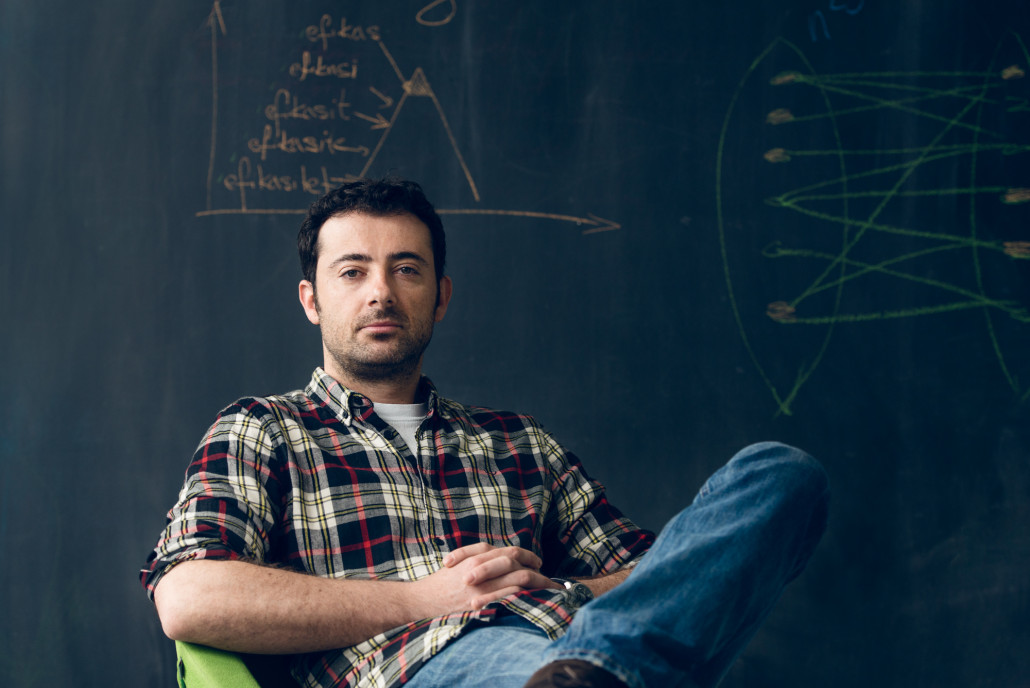 Mergim Cahani is the Founder & CEO of Gjirafa, Inc (gjirafa.com), the Albanian Search Engine. Gjirafa has recently raised $2.5M in angel and venture funding, with investors including Ester Dyson, Ondrej Bartos, Phillip Staehelin, and Rockaway Capital. An alum of StartupYard 2014, Gjirafa is working to bring state of the art e-commerce solutions to emerging markets in Kosovo, Albania, and the surrounding regions.
Mergim Cahani is the Founder & CEO of Gjirafa, Inc (gjirafa.com), the Albanian Search Engine. Gjirafa has recently raised $2.5M in angel and venture funding, with investors including Ester Dyson, Ondrej Bartos, Phillip Staehelin, and Rockaway Capital. An alum of StartupYard 2014, Gjirafa is working to bring state of the art e-commerce solutions to emerging markets in Kosovo, Albania, and the surrounding regions.
Previously he founded iziSurvey, a mobile survey solution, and MatchBox, now a defunct dating application. Currently Mergim serves as the President of the Board of Governors at American Chamber of Commerce in Kosovo, and has over 15 years of industry experience with startups, technology, management, and investment experience. Previously, in New York, Mergim worked for Broadridge Financial Solutions, an Adjunct Assistant Professor with the department of Computer Science at St. John’s University, and an executive management consulting program at Morgan Stanley Smith Barney. His education includes a Summa Cum Laude BSc degree in Computer Science, an MSc degree in Computer Science from New York University, and an MBA degree with honors majoring in Executive Management from The Tobin College of Business at St. John’s University, all in New York.
About the Venue:
The grand and historical Royal has stood in Prague for nearly 100 years. It recalls the glory days of the city when it was the capital of the First Czechoslovak Republic, from 1918 to 1938. After the 2nd world war, the theater was confiscated by the state, and it was not returned to its owners, the Maceška Family, until after the Velvet Revolution in 1989. It remains in the family to this day.
In 2014, the family agreed to rent the Royal to Jean-Christophe Gramont, who restored its look and feel to that of a First Republic public venue. Many of the original finishings remain intact, dating back to 1929.

Our decision to host StartupYard’s 2016 Demo Day at the Royal is a nod not only to our roots in Central Europe, but also to the Royal’s signature theme: of honoring the past while remaining unafraid to innovate into the future. As the story of those days in Prague just a century ago shows us: progress and innovation must be constantly defended and constantly re-energized by new generations, be they artists, engineers, or entrepreneurs.
The StartupYard 2016 Startups
Satismeter: Know Your Customers
Czech Republic
SatisMeter is perfect for online businesses that lack qualitative feedback from their users.
It’s an in-app feedback platform, that collects NPS data based on specific usage patterns. Unlike a traditional email survey or various in-house solutions, SatisMeter is an easy to integrate, multi-platform solution, perfect for small startups with only a few customers, all the way up to enterprise scale clients.
Satismeter’s current customers include BuzzSumo, Udacity, Mention, Adroll, Dashlane, and MailJet
ClaimAir: Know Your Rights. Get Paid.
Czech Republic
ClaimAir helps travelers fight the airlines for compensation, because fliers don’t have the time and resources to do it themselves.
It’s is an automated platform that handles the end-to-end process of claiming owed compensation for delays, baggage mishandling, etc. Did you know that the average compensation owed was over 300 Euros?
Unlike travel agencies, ClaimAir is specialized in handling legal compensation claims in large volumes.
Neuron Software: Making Sense of Sound
Czech Republic
Neuron Software is a deep tech startup, exploring the use of self-teaching, constantly learning neural networks in a wide range of audio analysis and audio manipulation applications.
Imagine having a car mechanic in your pocket, able to diagnose a problem just by listening to it. Or being able to accurately document the emotions of your customers, every time anyone from your company talks to them.
Neuron Software’s technology will enable a broad range of new capabilities that are just starting to be explored.
Stream.Plus: The Last Video Platform You’ll Ever Need
Czech Republic
Stream.Plus is the future of branded video distribution. Brands who have quality video content often lack control over the distribution and monetization of that content. Stream.Plus creates mobile and web apps for branded, interactive online TV channels that create a direct connection between consumers and brands.
NeuronAd: Ads for Everyone
Czech Republic
Online publishers rely heavily on advertising for revenue. But 20% or more of internet users now have adblockers installed. NeuronAd helps online publishers show relevant, unobtrusive ads to adblocked visitors, while maintaining the speed, security, and experience that led those visitors to employ adblockers.
Speedifly: When in Doubt, Travel
Bulgaria
SpeediFly is for spontaneous travelers who want to get away last minute, but don’t know where they can go on a budget.
It’s a mobile travel discovery platform that locates the customer and finds the 15 cheapest flights departing from and returning to the nearest airport in the next 10 days. Unlike clunky old-fashioned search engines, SpeediFly combines social dimensions like group travel planning, with the ability to discover destinations based on activities and interests.
TotemInteractive: Make Ads People Love
Poland
TotemInteractive enables Digital Out of Home Advertising to become more than just a one-way brand-to-customer ad channel.
It’s a cloud based advertising platform that supports interactive content, like games and contests, by allowing people to control ads directly from their smartphones.
Drive real audience engagement with your live ads, by making ads people love, and love to play with.
Salutara: Your Health Matters
Czech Republic
Salutara is a full-service online platform for medical travel. Every year, 11 Million people seek medical procedures that are not accessible or affordable in their home countries. With Salutara as a trusted advisor and intermediary, patients can search and compare clinics, arrange procedures, plan, book, and pay for a whole trip in one place. Travel for your health, with Salutara.
boatify: hop onboard (a boat!)
Switzerland
Boatify is for people who want to go on a boat ride, but don’t have easy and affordable access to a boat. It’s a web and mobile platform, where boat owners can earn money renting their boats directly. Unlike typical boat rental services, boatify relies on a network of partner “officers,” who take responsibility for the end-to-end customer experience of each boat rental, making it a snap to safely rent and take a trip in a boat near you, anytime.

